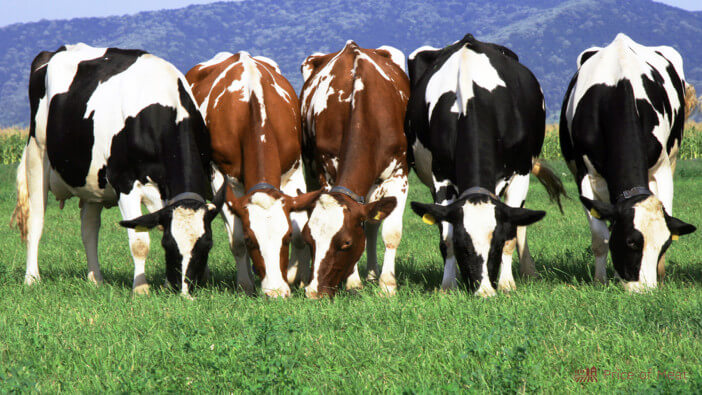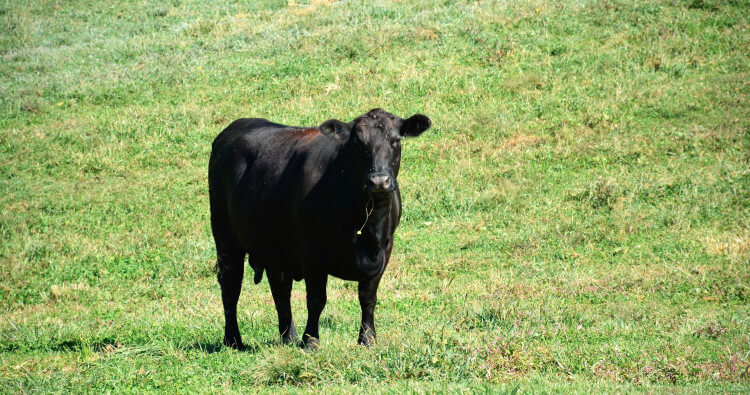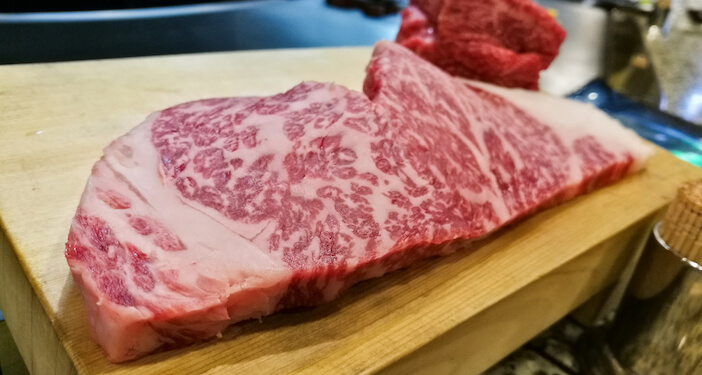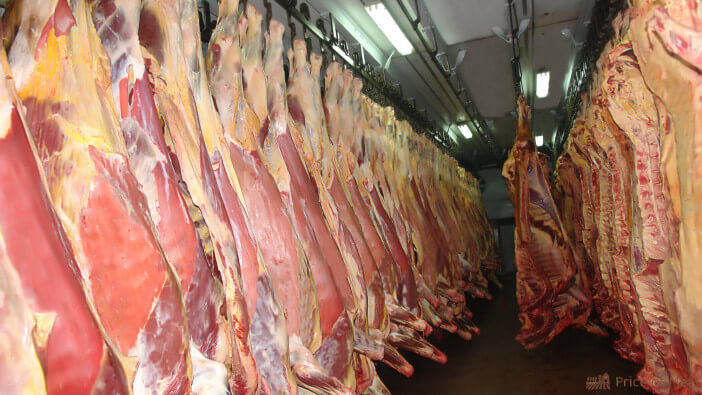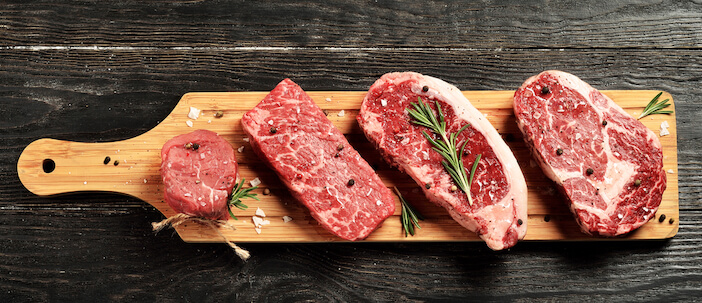31+ Useful Grass Fed Beef Statistics
Grass-fed beef is gaining popularity for its health benefits and quality. Industry statistics show growth, with projections reaching billions in value by 2033.
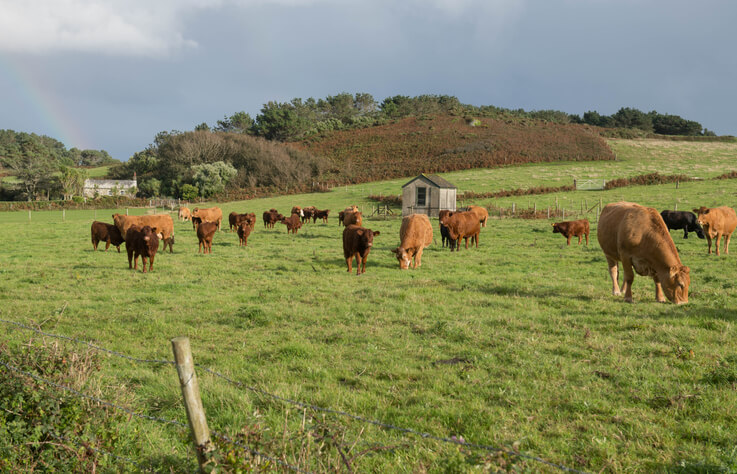
Grain-fed beef has become common worldwide since grain can be easier to access. Despite that point, multiple people buy grass-fed beef, so some may question what others find appealing about it and how it makes a difference.
You should review some vital statistics regarding grass-fed beef. As you go through it and understand what it offers, you can get involved with the industry or start purchasing grass-fed beef to enjoy it.
Disclosure: As an Amazon Associate, this site earns from qualifying purchases. Thank you!
Top 2023 Grass-Fed Beef Statistics
Check out these top ten points to review some of the most interesting statistics.
- The number of grass-fed beef producers increased from 100 in 1998 to 3,900 in 2016. (South Dakota State University)
- Japan, South Korea, China, Mexico, and Canada are the five largest export markets for beef in the United States. (USDA)
- Grass-fed beef is less than five percent of the market. (University of Georgia)
- Argentina, Australia, Brazil, New Zealand, and Uruguay produce most grass-fed beef. (Science Direct)
- Each grass-fed beef needs between 3.3 to 8.4 acres. (Cambridge University Press)
- Grass-fed beef should reach almost 18 billion dollars by 2033. (Future Market Insights)
- Between 1998 to 2013, grass-fed beef consumption increased by 25 percent. (LSU AG Center)
- 73 percent of farmers feed grass-fed beef grass hay. (Applied Animal Science)
- Grass-fed beef needs to eat for 20-24 months, while grain-fed needs 13-15 months. (Real Mom Nutrition)
- Australia’s grass-fed beef makes up about 97 percent of its cattle. (The Neff Kitchen)
Now that you have looked into these statistics, you should learn more about grass-fed beef.
Grass-Fed Beef Marketing Statistics
You should start by looking into the marketing side of grass-fed beef to see the money that comes from it. Doing so will help you understand its growth before you invest in it.
Grass-fed beef has increased from 17 million dollars in 2012 to 272 million in 2016. (National Library of Medicine)
Within four years, the grass-fed beef industry has multiplied by 16, showing that it’s exponentially growing and improving.
Americans are willing to pay a premium of 2.28 dollars to 5.65 for grass-fed beef. (Food Quality and Preference)
Many people appreciate the higher quality and benefits of grass-fed beef, showing its value.
The average beef pgrass-fed beef’se is more than half the price of grass-fed beef. (Agribusiness)
Despite these higher price points, people want to purchase grass-fed beef, showing its demand.
Grass-fed beef is projected to reach nearly 18 billion dollars in 2033. (Future Market Insights)
The growth shows no signs of stopping since it seems it’ll eventually reach billions in value.
Grass-fed beef has increased in sales by five percent annually from July 2020 to July 2021. (Supermarket Perimeter)
The growth increases over multiple years, and even a single year shows that more people are interested in grass-fed beef.
The grass-fed beef market has a compound annual growth rate (CAGR) of 6.9 percent from 2022 to 2027. (Technavio)
The growth has a short-term expected growth alongside long-term growth.
Grass-fed beef consumption has increased by 25 percent from 1998 to 2013. (LSU AG Center)
Not only do more people purchase grass-fed beef, and it increases in value, but more people are buying it.
Grass-Fed Beef Nutrition and Quality Statistics
You should also understand the nutrition and quality of grass-fed beef by reviewing the corresponding statistics. From there, you can review whether you should eat it and see what it offers.
Grass-fed beef has higher omega-3 fatty acid levels than grain-fed beef. (N.C. A&T State University)
More people are interested in omega-3 fatty acids, so they’ll want to eat beef that offers more of it.
Grass-fed beef has 90 percent more metabolites than plant-based meat alternatives. (Duke University Libraries)
Grass-fed beef has more growth than plant-based meat, indicating a focus on and interest in the industry.
Grass-fed beef has more Vitamin A and E than grain-fed beef. (Dr. Axe)
Some people take supplements for Vitamin A and E, so having food they can eat for it also helps.
Moisture values were higher in grass-fed beef than in grain-fed. (Journal of Animal Science)
Many people prefer moist beef when eating it, so they can enjoy juicier meat than grain-fed beef.
Grass-fed beef usually has 2.9 total fat compared to grain-fed’s 5.2 total fat. (Feast and Farm)
Since grass-fed beef has less fat, it’s healthier than grain-fed, though it’s not the healthiest food.
Grass-fed beef contains plenty of conjugated linoleic acid, which helps fight against cancer. (Agribusiness)
Fighting against cancerous cells always matters, even if you don’t have cancer, so the conjugated linoleic acid can help.
Grass-Fed Beef Export And Foreign Country Statistics
Various countries are involved with grass-fed beef. With that in mind, you should review the statistics involving foreign countries to see how they impact the industry.
The value of beef exports has increased from 2.7 billion dollars in 2002 to 9.9 billion in 2021. (USDA)
Not only are more Americans eating grass-fed beef, but countries around the world have an interest in it.
The five largest export markets for beef in the United States are Japan, South Korea, China, Mexico, and Canada. (USDA)
American-owned grass-fed beef appeals to many countries that require shipping overseas, so owners must establish excellent business relationships.
Most of the world’s grass-fed beef is produced in Argentina, Australia, Brazil, New Zealand, and Uruguay. (Science Direct)
If you live in America, you’ll need to work with people outside of the country to get involved.
North and Latin America hold 70 percent of the grass-fed beef global market shares. (Business Wire)
North America remains a crucial part of the industry, making it easier to find businesses involved with grass-fed beef.
North America is projected to have the lion’s share of 47.5 percent of grass-fed beef by 2025. (Globe Newswire)
North America continues to be involved with grass-fed beef and shows signs of sticking with it.
97 percent of Australian cattle are grass-fed beef. (The Neff Kitchen)
Australia offers plenty of space for cattle to eat grass, so American business owners should establish good relationships with them.
Grass-Fed Beef Industry Size Statistics
You should also see how much the grass-fed beef industry has grown, so you’ll understand the projections and how it can develop. Even though grass-fed beef doesn’t have as much reach as the grain-fed beef industry, it has room to grow and expand.
There were 100 grass-fed beef producers in 1998 and 3,900 producers in 2016. (South Dakota State University)
More people are buying grass-fed beef, and more producers are joining the industry.
Grass-fed beef makes up less than five percent of the beef market. (University of Georgia)
Grass-fed beef remains a small part of the beef industry, so it has room to grow.
Moving from grain-fed beef to grass-fed beef would require 22 million more cattle. (Environmental Research Letters)
People can’t expect the industry to instantly swap to an all-grass-fed beef model since doing so will require many more cattle deaths to cover the need.
Farms use between 3.3 to 8.4 acres per grass-fed beef they own. (Cambridge University Press)
To join the industry, you must invest in plenty of land.
Additional Grass-Fed Beef Statistics
You have a few more grass-fed beef statistics to remember since they apply to and impact the industry. Even though they don’t fall into specific categories, they matter and can help you gain additional insights into grass-fed beef.
Almost 85 percent of cattle start on grass and transition to a grain diet in the United States (Mississippi State University)
Grass remains an essential part of a cattle’s diet, showing that even grain-fed cattle have grass to meet their dietary needs.
97 million acres in the United States get plowed to grow corn and soy. (Tufts Now)
If you plow the ground, you can’t use it for feeding, indicating that the United States doesn’t have as much space for grass-fed beef.
96 percent of cattle are eventually moved to feedlots, receiving grain rather than sticking with a grass-fed lifestyle. (Nutrition Advance)
The significant shift of cattle to feedlots indicates why grass-fed beef remains a small portion of the market.
Grass-fed beef refers to cattle that only ate grass, except for milk, as a child, making it a 99 percent grass-eating rate. (USDA)
You can rest easy knowing that grass-fed beef, even at 99 percent, means they didn’t spend time eating grain.
Farmers using carbon sequestration can lower a grass-fed beef’s carbon footprint by 42 percent. (Oklahoma State University)
Even though grass-fed beef has more carbon emissions, this technique makes a difference.
73 percent of farmers use grass hay when providing food for grass-fed beef. (Applied Animal Science)
Grass hay remains an efficient and easy way to feed beef if they can’t access grass.
Grass-fed beef needs to eat for 20-24 months before they’re ready to enter the market, while grain-fed takes 13-15 months. (Real Mom Nutrition)
Grass-fed beef costs more since they need more time to be ready to enter the market.
Grass-finished beef feeds eight Americans per animal. (Beef Research)
Grass-fed beef naturally doesn’t provide as much as grain-fed beef, making it less efficient.
Wrap Up
With so many grass-fed beef statistics available, you can get a feel for the industry while understanding what you can expect. Not only does it show signs of growing and making more money, but people appreciate the quality and value offered by the beef.
Feel free to get involved with grass-fed beef by purchasing some or getting involved in the industry. Either way, you’ll enjoy various benefits to help you see why people buy grass-fed beef and how it compares to grain-fed beef.

